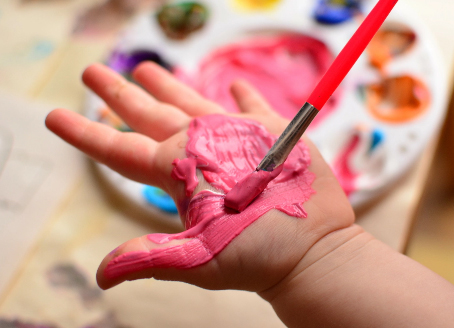Services
Juvenile dermatomyositis
What is juvenile dermatomyositis?
Juvenile dermatomyositis is a rare autoimmune disease that causes inflammation of the blood vessels (called vasculitis), muscles (called myositis) and the skin (called dermatitis). It mostly affects children who are 5-10 years of age. Juvenile dermatomyositis occurs when the immune system fights the body’s own tissues and cells, resulting in an inflammation of the muscles. In some cases, it may result in tissue damage.
What are the symptoms of juvenile dermatomyositis?
The primary symptoms of juvenile dermatomyositis are muscle weakness and skin rashes due to inflammation from an overactive immune system. Other symptoms may include:
- Raised bumps on knuckles called gottrons papules
- Gradual muscle weakness (often in the neck, shoulders, trunk, back or hips)
- Frequently falling
- Weak voice
- Difficulty swallowing
- Fever
- Sore and swollen joints
- Fatigue
- Severe abdominal pain caused by vasculitis.
- Violet colour and dusky red rash on the face, eyelids, cheeks, chest wall, knees or back of elbows. This may be mistaken for eczema.
- Difficulties with doing everyday activities like climbing stairs, standing up, riding a bicycle, getting dressed, and lifting the head.
- Lung problems are due to inflammation and the thickening of the small airways in the lungs.
- Hardened lumps due to deposits of calcium underneath the skin.
When a child experiences these symptoms, they may not be interested in participating in normal childhood activities. At times, the child may be accused of being lazy.
What are the treatment options for juvenile dermatomyositis?
Treatment of juvenile dermatomyositis depends on how severe the disease is and the overall health of the child. The main goal for treatment is to:
- Control the inflammation
- Prevent tissue damage
- Improve muscle strength
- Relieve pain
- Prevent the occurrence of other symptoms
- Help the child and their family to live and cope with the disease
As a paediatric rheumatologist, Dr Ambaram may prescribe corticosteroids, immunosuppressants, intravenous immune globulin (IVIG) or other disease-modifying agents.
FAQ:
Services

"
The Soul is healed by being with children.
- FYODOR DOSTOEVSKY
"
What is a paediatric rheumatologist?
A paediatric rheumatologist is a doctor that cares for children and adolescents with medical conditions such as inflammatory and non-inflammatory musculoskeletal disease and autoimmune diseases. Autoimmune inflammatory diseases include juvenile dermatomyositis, juvenile Idiopathic arthritis, vasculitis, scleroderma, systemic lupus erythematous and periodic fever syndromes. Non-inflammatory diseases include chronic musculoskeletal pain syndromes, juvenile hypermobility and growing pains.



